If your business is going to invest the time and resources into creating case studies, you want them to be done well.
Before you even start, it’s important to have a sense of how and where you’ll be using the case studies so that you know what to create and in what format. Know your audience, and understand what will appeal to them before you get started.
There are two general types of case studies that are used to help market your business and use in your sales efforts: written and video.
General Types of Case Studies
Case studies are often written and/or video. At Audience Ops, we’re partial to video case studies, supported by a written case study.
Want more info about what a marketing case study is? Check out this post before diving into the examples).
1. Written Case Studies
Written case studies are just as they sound: the client or customer’s story is shared through writing, typically in a narrative/story-driven format or a more standard business format of background, challenges/opportunity, strategy and execution, results and client feedback. Before you get started, it’s ideal to know what your final deliverables will be.
Which written case study type should you choose? Go with what fits the voice and tone for your company and brand. You don’t want a case study that is too casual when your prospective customers will expect formality and if your brand is fun and edgy, then a traditional format just won’t do.
We’ve got more depth on written case studies here.
2. Video Case Studies
Video case studies: these are not your typical 30-60 second video testimonials where someone gives a quote about your brand or product. Instead, these are visually designed stories, similar to what you’d find in a written case study. But instead of writing, you hear the person’s story and experience. We detailed video case studies in this article.
Audience Ops has case study video producers who bring the client’s story to life with titles, highlighting of metrics and data, and adding in b-roll of your tool, product, or other video that will enhance the story. Our standard is a 3-4 minute video but can make these shorter or longer as needed.
Case Study Examples
Every company’s case study will look a bit different from the others, but you can use these examples to help inspire you and to share with stakeholders if you’re in need of getting the go-ahead to work on case studies for your company. (And remember that sometimes outsourcing the whole process leads to a stronger result and saves you time).
Written Case Study Examples
The following written examples were all prepared by the Audience Ops team:
Narrative Written Case Study Examples
Narrative case studies are a story-driven format. They often use interview techniques and direct quotes to drive the heart of the story. You can read more about how to format a case study in addition to seeing the examples.
- Neuralli – Personal stories in the health and wellness sphere can be particularly impactful as a narrative case study. In this example, the case study subject shares some very personal details about her journey which are very relatable to others who have had similar experiences.
Mothership – This written case study example for Mothership paints a picture of the situation the client faced while setting up Mothership as the ideal solution. This narrative style includes more additional detail about the client in the story than a traditional written case study typically has.
Traditional Written Case Study Examples
Traditional written case studies tend to follow more of a “problem, strategy, results” format. They may or may not include first-person quotes from an interviewee – many are completely written in third-person.
- Designed.Co – This example does have some first-person quotes from the case study subject. It’s a more traditional format in the sense that it is laid out as “problem, solution, results.”
- Timing – This case study follows a “who, problem, solution, results” format. It leans heavily on first-person quotes while maintaining a traditional format.
Video Case Study Examples
Video case studies can be used on several different platforms, including websites and social media. Here are some examples created by the Audience Ops team:
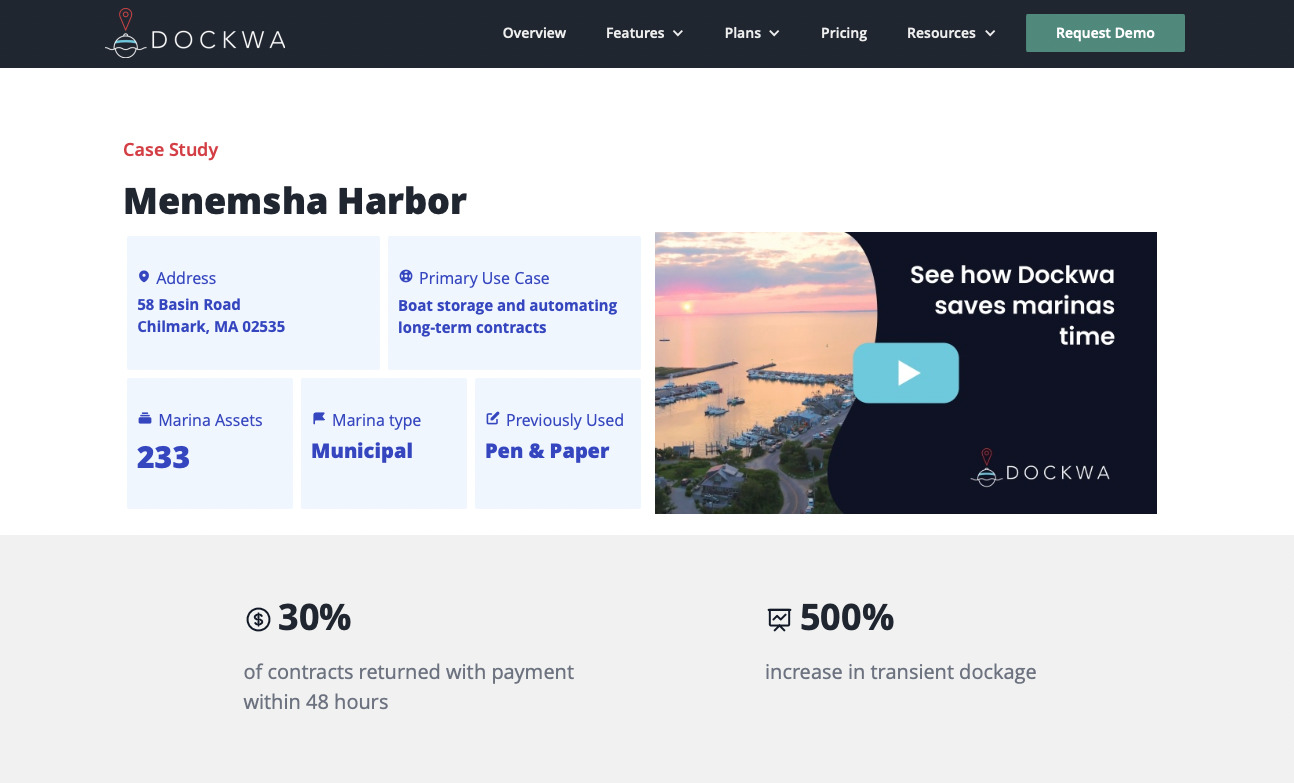
Video Case Study Examples on Websites
- Dockwa – This case study is effectively displayed at the top of the page alongside some key data to help entice people to play the video.
- Mothership – This Yard Mastery video case study is displayed above the written case study.
Video Case Study Examples on YouTube
- Timing for Mac has their case study with Toast Design on YouTube. Their description includes links where people can learn more and keywords that people can find them with.
- Images are worth a thousand words and Swift is a tool that deals with plantar warts. The video case study we created includes before and after image as well as broll of the tool in use. The client loved this video case study, but if you’re not into feet, you may not want to click through (or stop watching at about 1:03).
Designed Case Study Landing Page Examples
When you have more than one case study complete, having a landing page or section on your website dedicated to these is helpful. That way you can send prospective customers this link. In time, as your library grows, you can organize them by use-case or type of client, making it even easier for potential buyers to see themselves using your solution or service.
Here’s an example from Mothership.
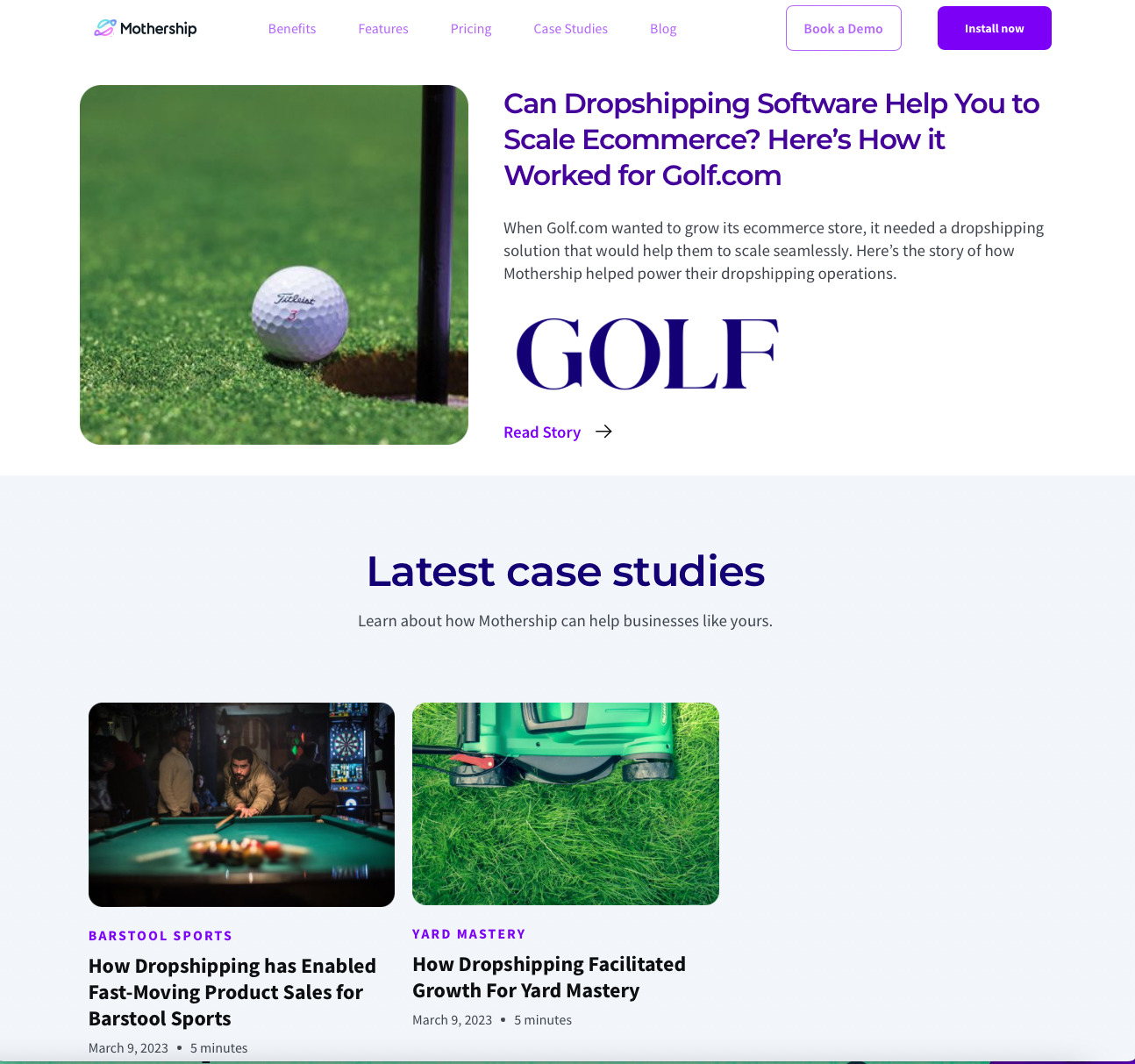
Here’s ours– and notice how we slip in testimonials right below!

Repurposed Case Study Assets
In addition to the long-form case studies you create, you also want to think about repurposing those into other assets. These can be used in numerous ways and expand on the impact of your investment. Here are some of our favorite ways to repurpose case studies and examples.
Image carousel:
- Once you have information about a client or business, you can present that information visually. Image carousels do well on sites like LinkedIn and can be shared by the brand and team members from your company.
Check out this image carousel we created for Delegated:
- Once you have information about a client or business, you can present that information visually. Image carousels do well on sites like LinkedIn and can be shared by the brand and team members from your company.
Social clips
- Take the longer video and edit it down into powerful sound bites. Be sure to add in captions because many people don’t have their volume up when they’re scrolling. Videos help people stop their scroll because they’re attention-grabbing. Even if the whole clip isn’t viewed, you’re building brand-awareness.
Our clients at ARPU and Delegated both chose to create social clips from their longer case study. You can use these for organic and/or paid social.
- Take the longer video and edit it down into powerful sound bites. Be sure to add in captions because many people don’t have their volume up when they’re scrolling. Videos help people stop their scroll because they’re attention-grabbing. Even if the whole clip isn’t viewed, you’re building brand-awareness.
Supercut Video Case Studies
- Once you have several case study videos complete, you can do what we call a “Supercut.” You choose clips from each case study and weave together to make another video that highlights why multiple people are fans of your company.
You can organize these videos around value propositions, use cases, or get creative and use all of the fantastic content you’ve created. Create these as 2-3 minute videos and shorter social media posts for the biggest impact.
Delegated asked us to create several supercuts designed as social clips. This one highlights the benefits of working with a VA. Similarly, ARPU wanted supercuts developed around specific value props of the app.
- Once you have several case study videos complete, you can do what we call a “Supercut.” You choose clips from each case study and weave together to make another video that highlights why multiple people are fans of your company.
Charts and graphs or infographics
- If you’ve already created graphics as part of your written or designed case study, those may be able to be used as stand-alones for social media posts or callouts in a newsletter. You may want to do some additional design to give more context to the graph or data, but visuals of data, graphs and infographics tend to do well for both sales and marketing.
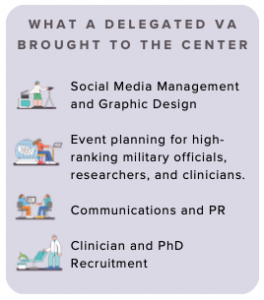
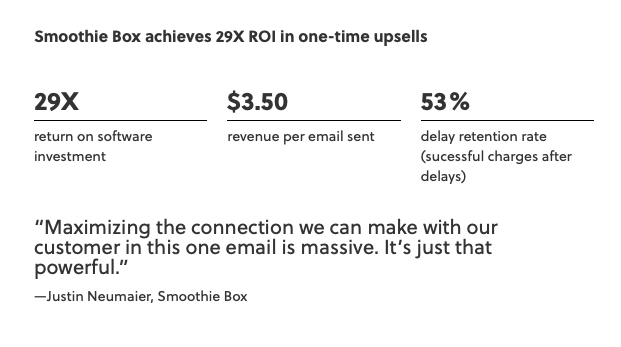
Designed Written Case Study Examples
These are a nice complement to the longer written case studies. These can be used as sales assets by sharing with prospective customers, as marketing assets for paid ads, or for PR purposes. This can also be a great option for a more narrative case study: You can make it more formal to share with stakeholders or investors, while your customers are interested in the more casual version.
Delegated asked us to create a single page document and a longer version so that both sales and marketing would have what they need.
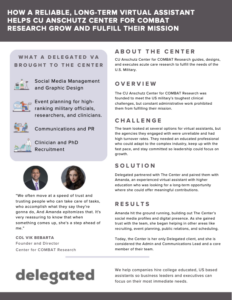

Final Thoughts
The power of case studies is in how you use them. Writing a case study or producing a video is a good first step. But if those merely sit on a webpage, you’re missing out. Take the time to develop your case study into multiple assets, using these case study examples as a guide.
And, once you’ve created these assets, be sure to have them easily accessible to team members who will need them. That way, your sales team can easily add content to their emails: use-cases specific to their prospects or data that they’d find appealing. Your marketing team will be able to have content to use for social media posts and your PR team or agency will have content at the ready if there’s an opportunity for some media exposure.
If you don’t have the internal team or bandwidth to make case studies happen, please reach out. Audience Ops helps to create written and video case studies and multiple assets from the long-form content. We’ll work with you to develop what your team needs while taking care of your customer throughout the process.
Case Study Chat
We're excited you'd like to learn more about our done-for-you case studies. Please fill out your info and we'll be in touch.
"*" indicates required fields